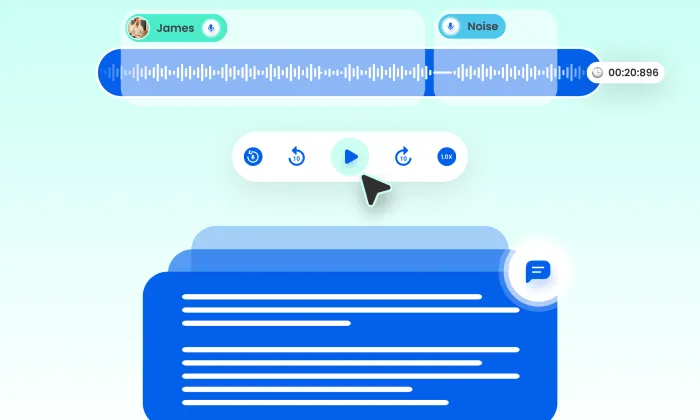How are patient contributors selected and briefed for doctor–patient conversation dataset?
Data Collection
Healthcare
Conversation AI
Selecting and briefing patient contributors for doctor-patient conversation datasets is crucial for creating realistic data that enhances healthcare AI systems. Let's explore how contributors are chosen and prepared to ensure the dataset's authenticity and utility.
Key Selection Criteria for Patient Contributors
The selection process is designed to reflect the diversity and complexity of real clinical settings, ensuring that the dataset supports a wide range of AI applications.
- Demographic Diversity: Contributors are chosen to mirror various demographics, including age, gender, and cultural backgrounds. This diversity allows the dataset to capture different doctor–patient interaction nuances, enhancing healthcare AI's ability to process and interpret diverse communication patterns effectively.
- Clinical Relevance: Selection is based on contributors' capacity to engage in meaningful medical dialogues. For example, they might simulate discussions about symptoms or treatment plans relevant to specific medical specialties like cardiology or pediatrics. This ensures the dataset's applicability in training AI for empathy detection and intent recognition.
- Authenticity Screening: Potential contributors undergo brief evaluations to assess their comfort and ability to engage in realistic, health-related conversations. The goal is to ensure that interactions feel natural and unscripted, crucial for developing effective speech recognition models.
Effective Briefing Strategies for Contributors
Once selected, patient contributors are thoroughly briefed to ensure they understand their roles and the context of their participation.
- Objective Clarification: Contributors are informed about the dataset's purpose, explaining how their interactions will help train AI models in healthcare applications, such as conversational AI and clinical summarization.
- Scenario Overview: While keeping conversations unscripted, contributors receive outlines of potential scenarios, like discussing common health issues or medication adherence. This preparation helps them feel confident and maintain the conversation's natural flow.
- Ethical Considerations: Contributors are briefed on privacy measures and informed consent practices. They are reassured that no real patient data is involved, and their identities will be anonymized, maintaining ethical data collection standards.
- Interaction Guidance: To foster genuine dialogue, contributors receive tips on expressing emotions and maintaining engaging conversations. This guidance helps replicate the dynamics of real doctor–patient interactions, crucial for developing nuanced AI systems.
Navigating Challenges in Selection and Briefing
While the selection and briefing processes are well-structured, they come with challenges that require careful attention.
- Maintaining Naturalness: Ensuring conversations remain genuine and unscripted is a key challenge. Over-prepared contributors might lead to forced interactions, which can compromise data quality.
- Diversity in Scenarios: Achieving a wide array of believable medical scenarios requires balancing thematic guidance with spontaneous dialogue to prevent stilted conversations.
- Feedback Mechanisms: Incorporating contributors' feedback during and after recordings can improve interaction quality and inform future processes, ensuring continuous dataset improvement.
Insights for Experienced Teams
Experienced teams often refine their strategies to enhance dataset quality and relevance.
- Iterative Refinement: Continuously evolving selection and briefing strategies based on feedback and data analysis ensures the dataset remains valuable and effective for healthcare AI applications.
- Engagement with Contributors: Building rapport with contributors leads to more meaningful interactions and, consequently, more authentic datasets.
- Realistic Simulation: While simulations are essential for ethical data collection, ensuring they mimic real-world interactions closely is crucial. This involves capturing both the language and emotional undertones present in genuine dialogues.
Conclusion
In summary, the careful selection and briefing of patient contributors ensure the creation of robust doctor–patient conversation datasets. These datasets play a pivotal role in advancing healthcare AI, providing the foundation for systems that improve patient care and enhance clinical outcomes.
What Else Do People Ask?
Related AI Articles
Browse Matching Datasets
Acquiring high-quality AI datasets has never been easier!!!
Get in touch with our AI data expert now!








